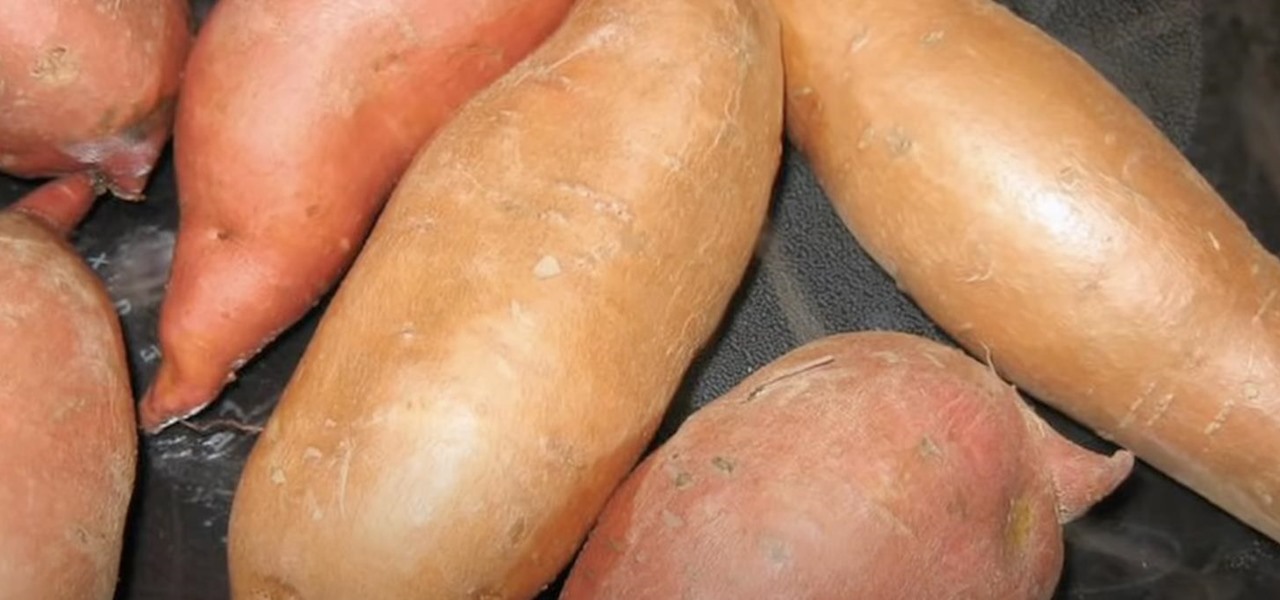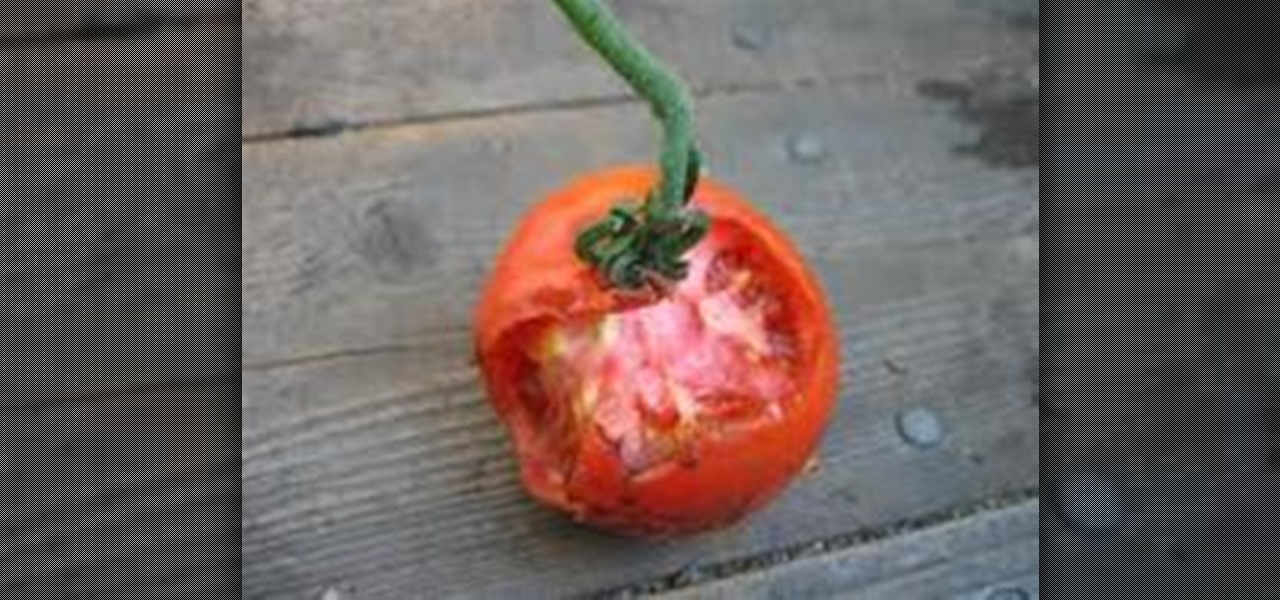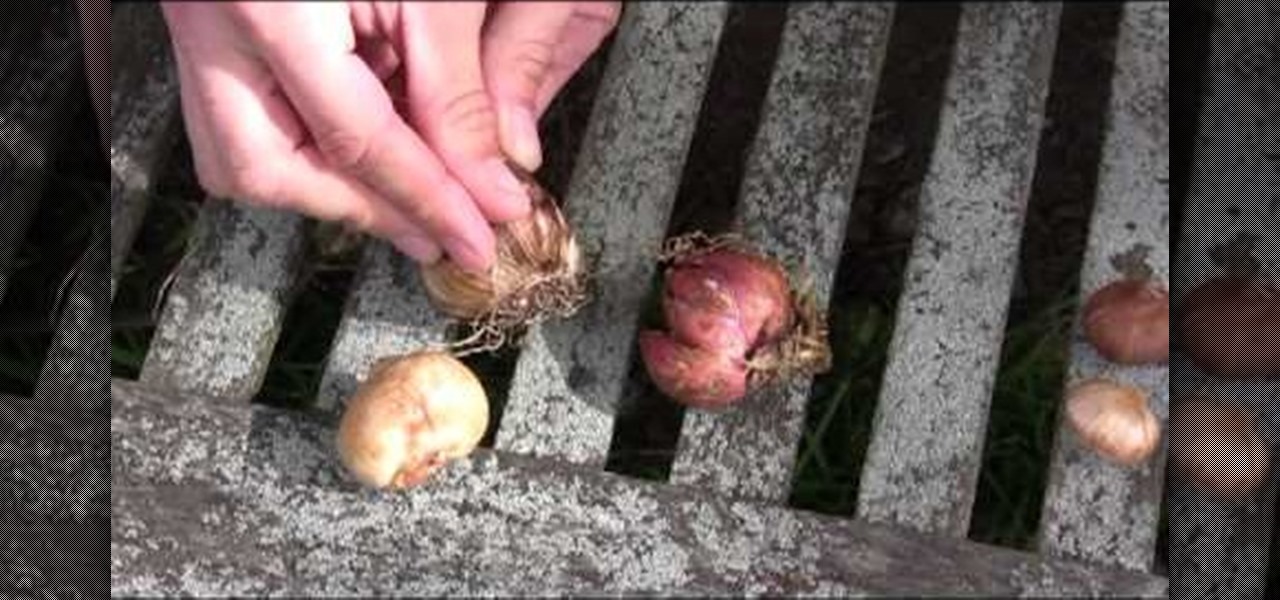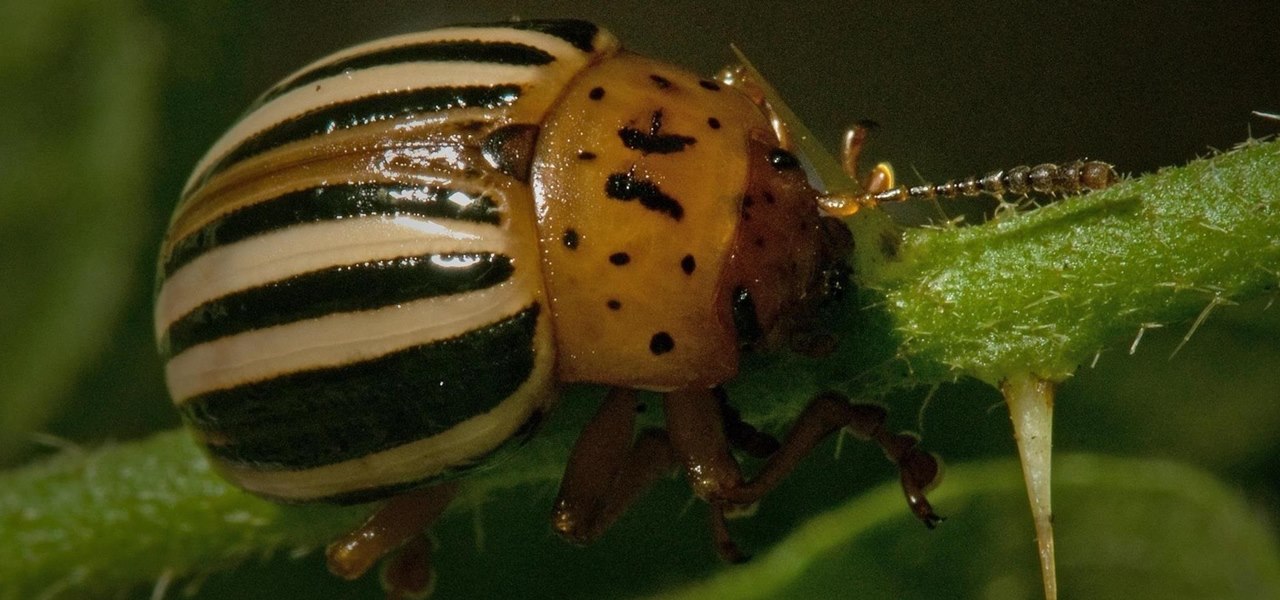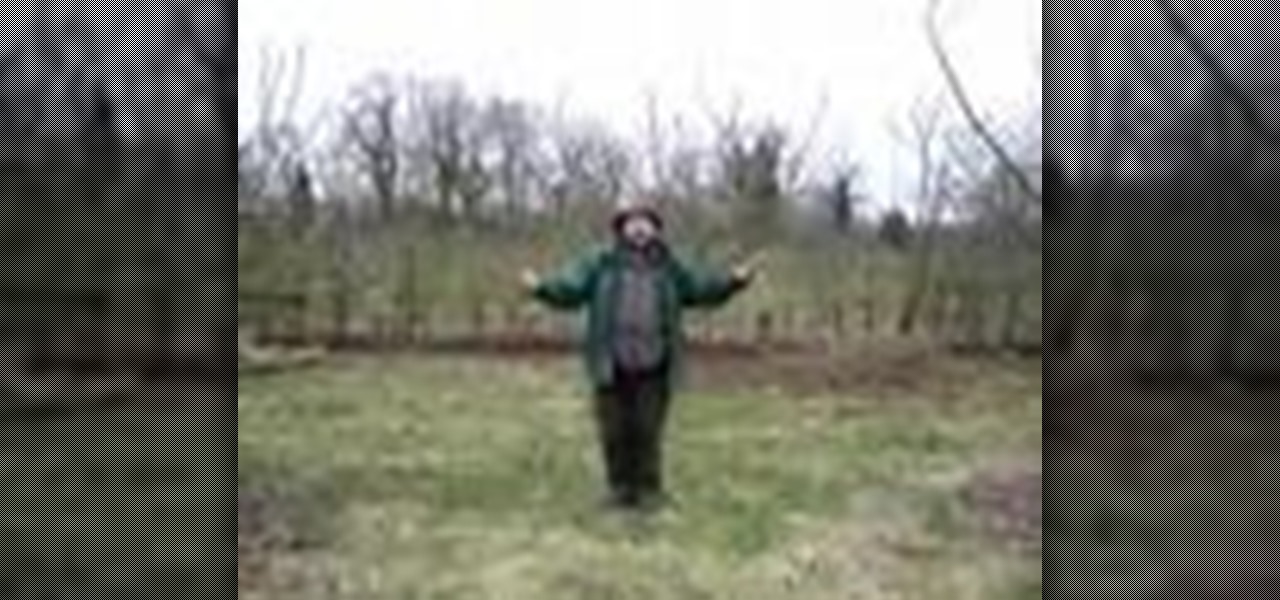Hot Gardening Posts

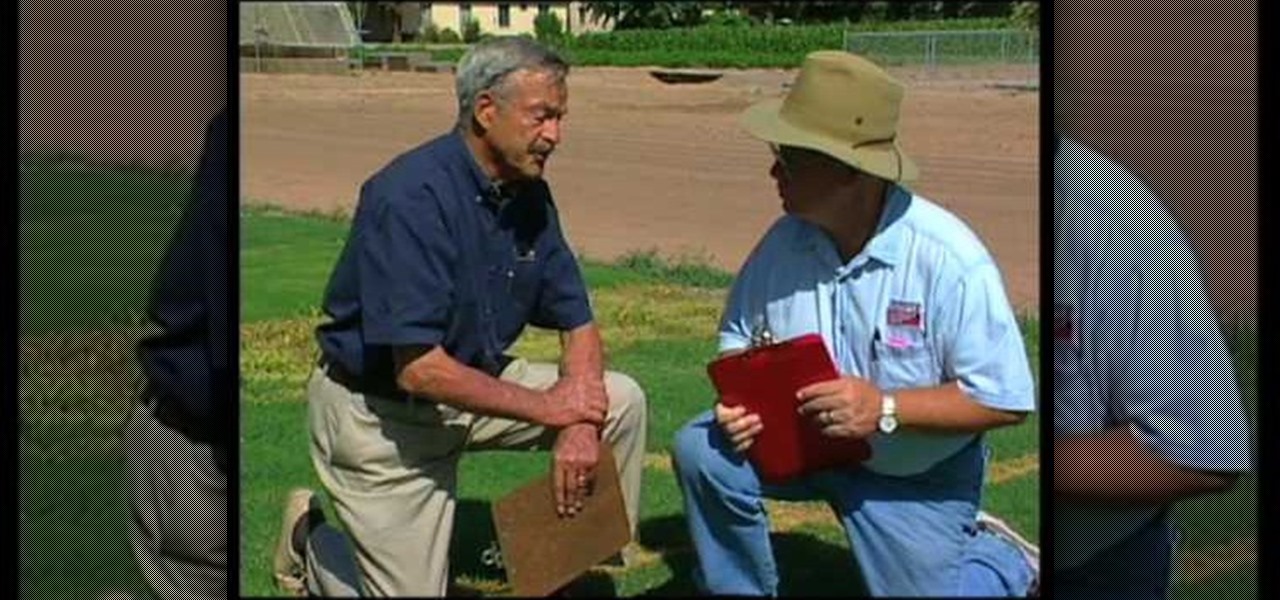
How To: Identify and control problems with bermudagrass
In this how-to video, you will learn how to identify and control problems with Bermuda Grass. If you are worried with allergies, you should check if you are allergic to this particular grass. The seed heads produce the majority of it, but even the pollen produces these allergies. Regarding the water schedule, the grass needs water during the summer. If you have a fine textured soil, you should water about one time a week. If your grass is turning a blue-gray color, it might be lacking water. ...
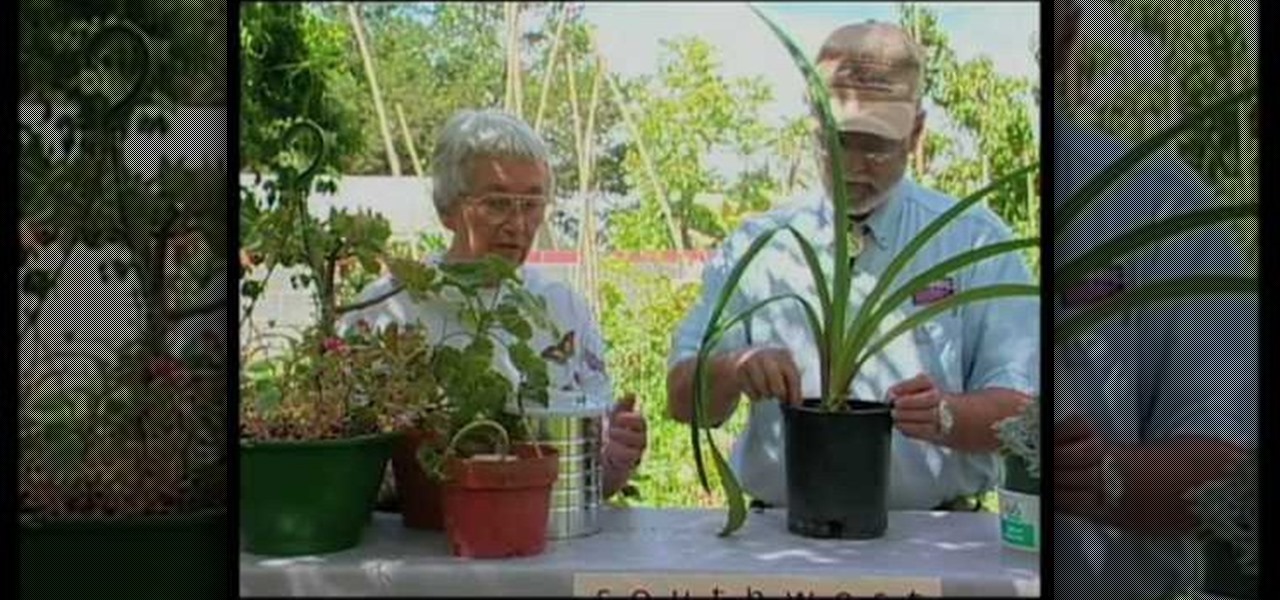
How To: Re-pot house plants
This video shows you how to re-pot your houseplants. When your geraniums have overgrown, cut your clippings. Let the clipping cure: i.e. the wound that you created needs to seal and cure, before planting. Set them aside, in order to allow them to cure. Once that is done, submerge the tip of the fresh clipping in a pot filled with fresh soil. Remember to remove dead leaves.

How To: Fertilize your fall lawn
John White from Southwest Yard and Garden teaches viewers how to fertilize and care for their fall lawn. Fertilization is recommended at 1 pound per month. As you reach September and October, reduce your nitrogen to 1/4 a pound and as October comes around reduce this even further to about half a pound. You will need turf fertilizer and on this package there will be three numbers in the order representing nitrogen, phosphorous and potassium. In late fall you will want to use a fertilizer with ...
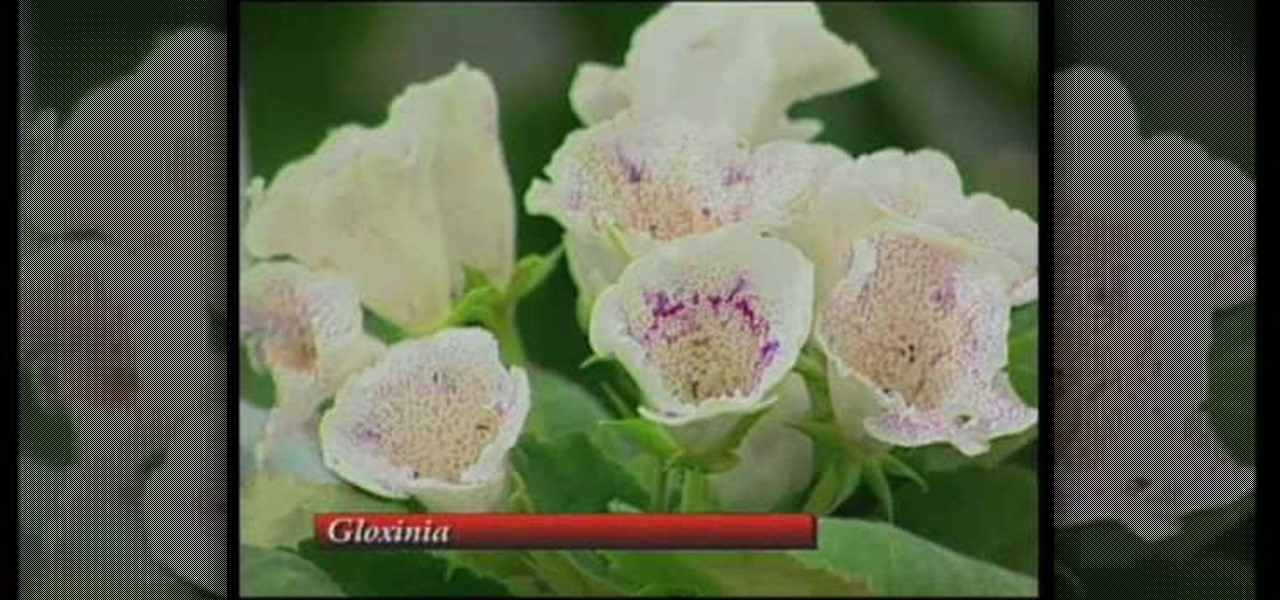
How To: Care for venus flytrap, gloxinia and bromeliad
To care for:Venus Flytrap: It is a great project for children, however, there are a few things to remember to look after this plant. Firstly it is best to use cover to protect the plant, as they have a tendency to dry out quickly. Also be careful not to overfeed the plant insects.Gloxinia: Many people buy this beautiful plant in bloom, however, after bloom they throw away the plant as they think they have killed it by over watering. All you do is stop watering it so it lies dormant, and then ...
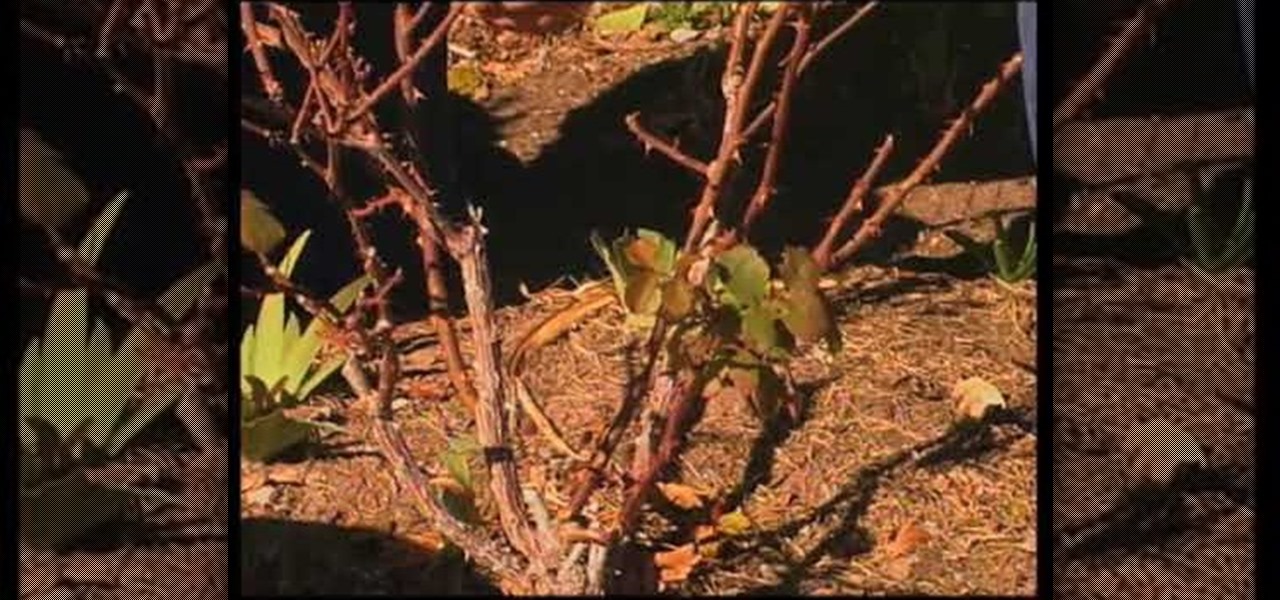
How To: Prune hybrid-T roses
John White and Rosemary Maddox Master Gardner will teach us how to prune our hybrid t-roses. To begin, you’ll need a set of bypass pruners, long handles loppers for branches or canes, which are bigger than your thumb. You may also need a pruning saw, 10% bleach solution which is 10 parts water + 1 part bleach., an old dog bowl for the bleach, gloves, and a low stool. Begin with the bypass pruners clipping all branches that may be crossing or too close to the main branches that you will keep. ...
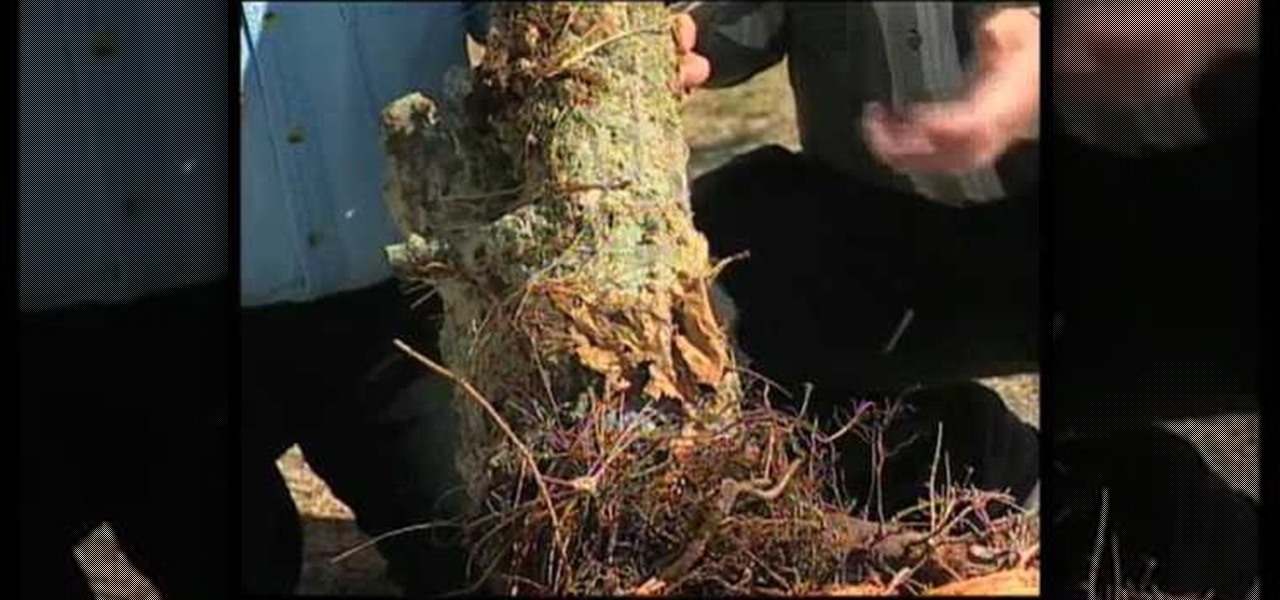
How To: Keep your tree from dying
First of all you have to check the root which has started circling. Then notice that there is a dark portion at the bottom of the trunk. You can prevent this problem by avoiding to plant too deeply and not to leave in the pot for too long. You have to plant it at the right depth. Now check the roots of the bigger tree that has died. You shall notice that the roots have started circling around a part and then they stop the circulation to the top of the tree and then the tree dies because it wa...
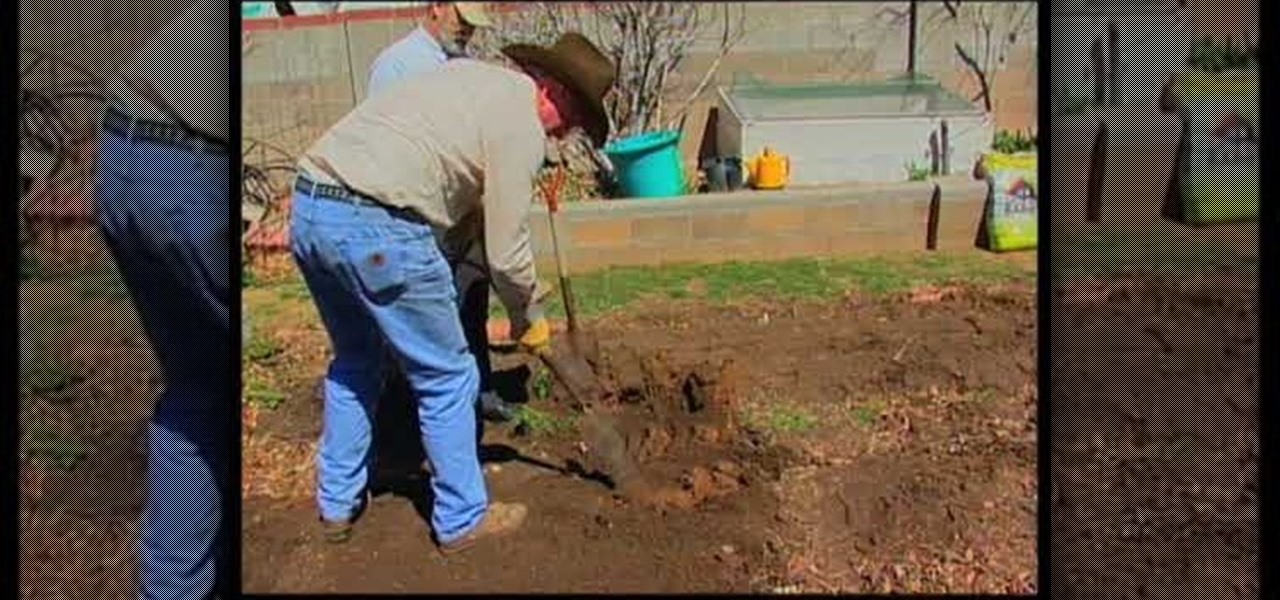
How To: Prepare garden soil for planting
Southwest Yard and Garden teaches viewers how to prepare garden soil for planting. You can use compost to work this into your soil. You can make your own compost and you can also buy compost. First, you can use a flat bladed spade or a sharp shooter spade to double dig your garden soil. First, you should dig double deep into the soil and turn the soil to the side. What you want to do is dig a trench. Go back to the beginning of the trench and dig a second depth. You will want to get below the...
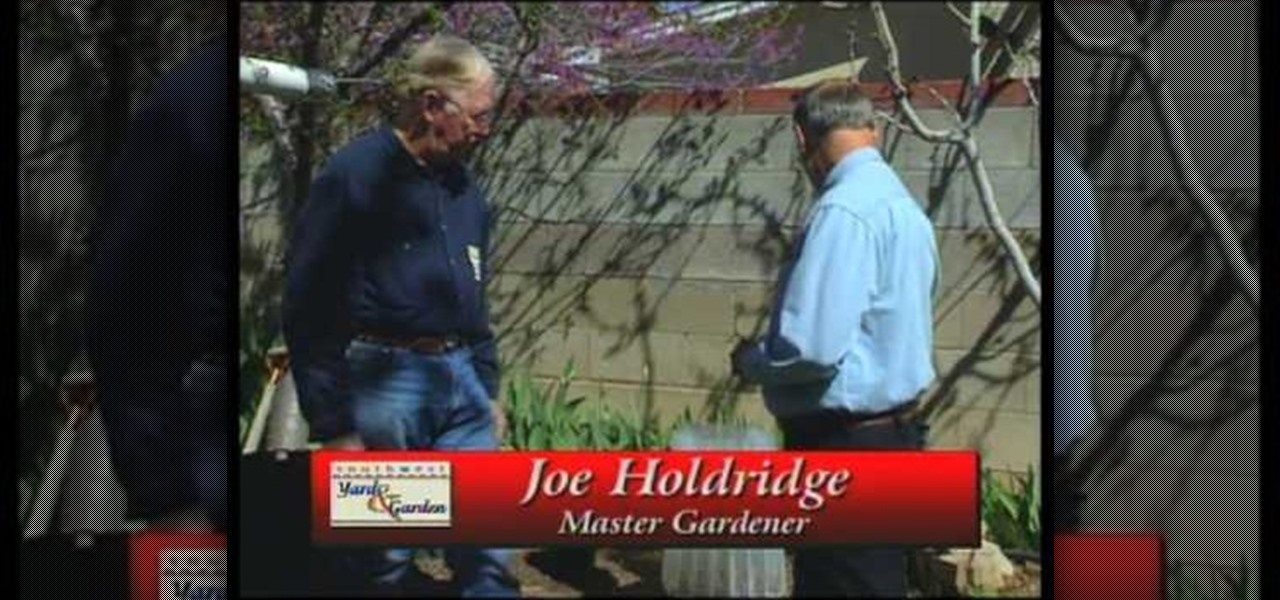
How To: Use plastic row covers & wall of water for plants
This video demonstrates how to use plastic row covers and wall of water to start plants early. A lot of gardeners want to start their planting early if the weather is nice. But they may be subject to some frost still yet. How can they protect their plants? First is a demonstration of how to use a spun bond polyester like material. It is breathable, rather than using clear plastic, so the plants don't cook on warmer days. Then the video shows how to use a wall of water to start a few plants ea...

How To: Use recycled paper in compost at home
Southwest Yard and Garden shows viewers how to use recycled paper in compost! In order to compost paper you should first shred up the paper into pieces. Then you need to work in the paper into the soil or sand. You should work the paper into the soil in equal parts. Make sure you mix nitrogen into this composting paper. You need to mix nitrogen into it or it will not decompose and the process will not be fed. So first mix your paper with soil and sprinkle in nitrogen. You also need to water t...

How To: Identify problems with euonymus, chinese holly & pines
In this Home & Garden video tutorial you will learn how to identify problems with euonymus, Chinese holly & pines. Japonica plant is very susceptible to powdery mildew which shows up as white spots on the leaves. It also affects some other plants like roses. This will discolor and deform the leaves. You need to spray with recommended fungicide. If the disease has gone too deep into the plant, you may have to remove some badly affected foliage and then spray. You may also think of replacing th...
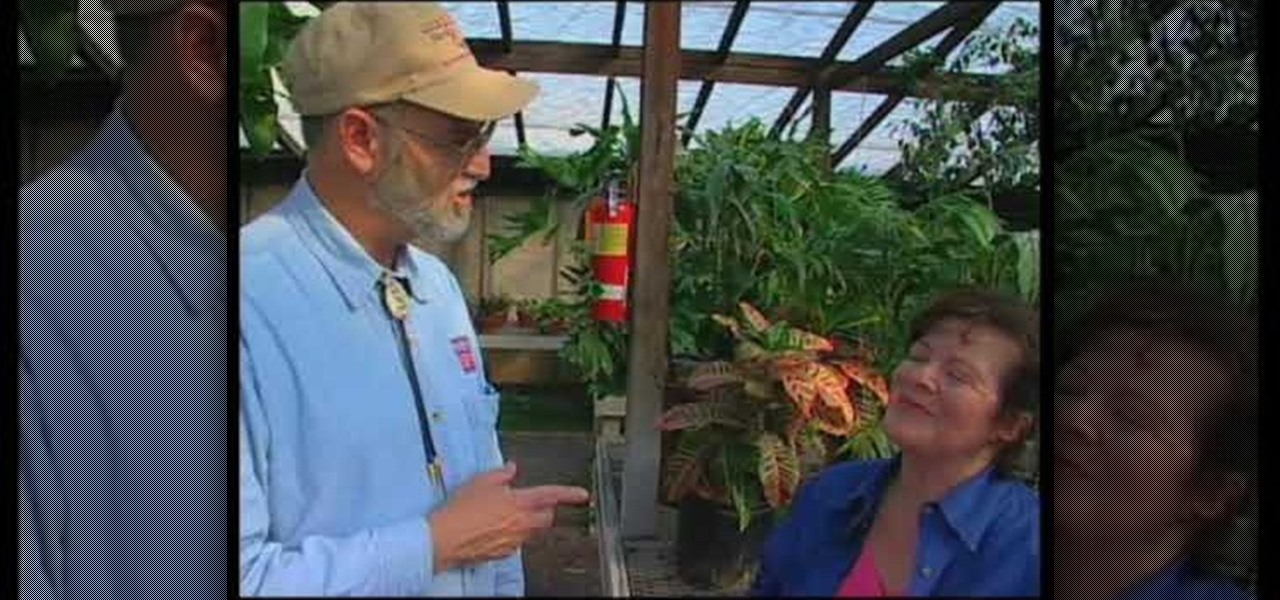
How To: Plant asparagus
Southwest Yard and Garden teaches viewers how to plant asparagus! First, in your garden you need to dig a trench that is about 8 inches deep. You should mix up some compost into this trench. Choose an asparagus that has a fern and make sure you choose a variety that is a male hybrid. These are more tolerant of other problems such as wilt. Simply, plant these 8 inches deep but do not cover them fully. Cover them gradually and cover it as it grows highly. Make sure your roots are laying horizon...

How To: Care for a garden in february during dormant season
John White, a Doña Ana County Extension Agent, highlights a new section on the show - a monthly checklist for the garden. This time, he talks about what to do in your garden in the month of February. The checklist includes planting dormant plants, pruning with a purpose and applying herbicides and pesticides. He shows us various types of dormant plants that can be purchased from nurseries in February for planting such as potted, bare-root or root-balled plants wrapped in burlap. As for prunin...
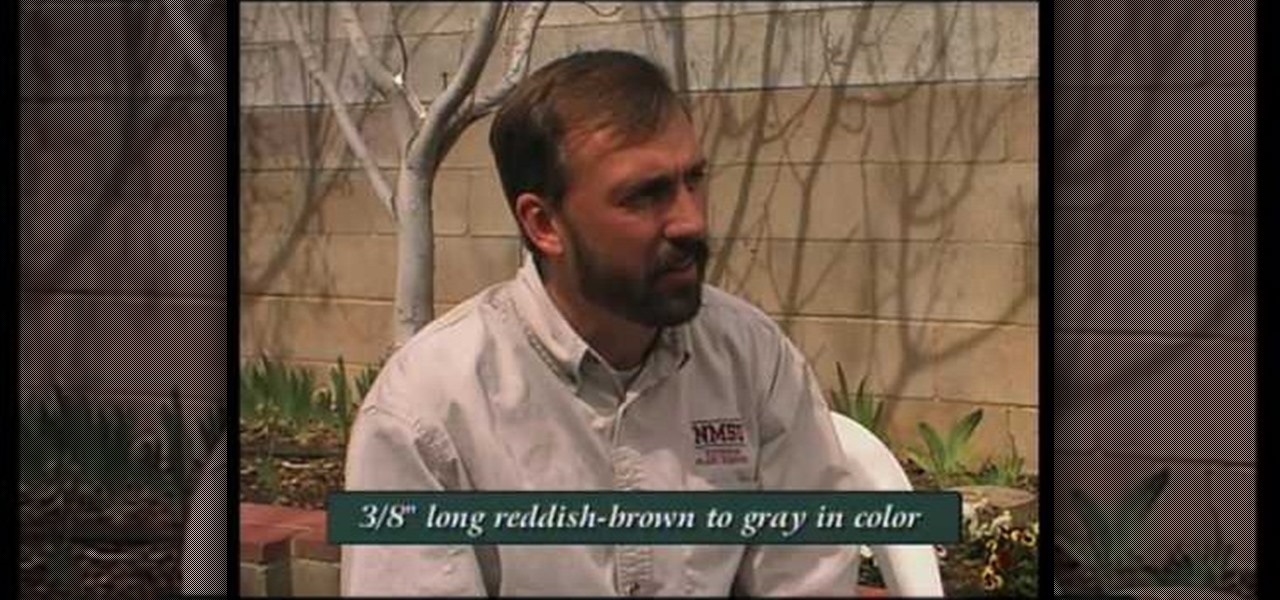
How To: Identify and control the pine tip moth
This is a tutorial for controlling the Pine tip moth. Identifying and controlling the pine tip moth consists of studying the small plants of pine. The attacks on pine trees is caused by Nantucket pine tree moth found along the Rio Grande Valley as far north as Espanola, it has spread to South Arizona and California by importing grafts from Mexico. The moths are 3/8 inch long reddish brown to grey in color. They attack the main stem of the baby plant and the pines instead of growing vertical g...
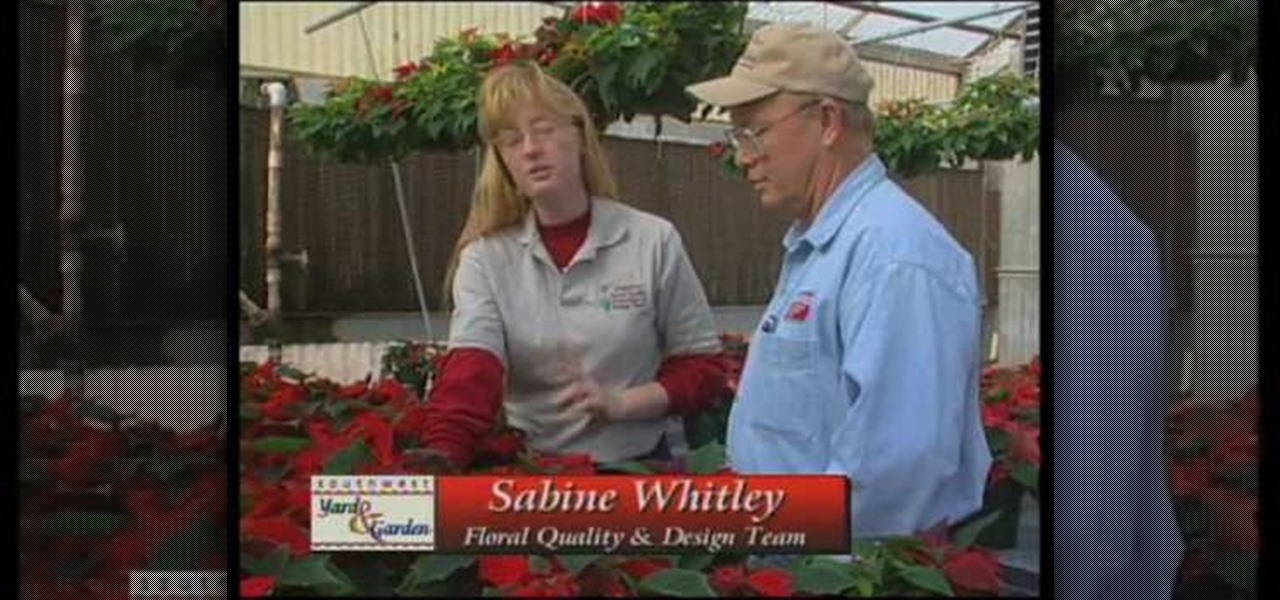
How To: Pick and care for poinsettias
Learn how to choose and care for poinsettias with Southwest Yard and Garden's John White. You will be taken through the typical height and specifications for poinsettias, as well as what to look for in the leaves and flowers. One of the most important parts of growing poinsettias is keeping to a specific schedule. Measuring the plants is also important as plants that are too tall or too short are undesirable. Remember to frequently water the plants, but be careful not to overwater. Also, keep...

How To: Install a lawn irrigation system
In this how-to video, you will learn how to install a lawn irrigation system. You must have a digital controller with an AV program. This controls the zones at which the water comes on. These can save you a lot on water use. The controller controls the valve which accesses the water. Make sure all your sprinkler heads are all the same. There are different types of heads, each serving for different situations. Backflow preventers are needed as well, as they prevent contaminants from going back...
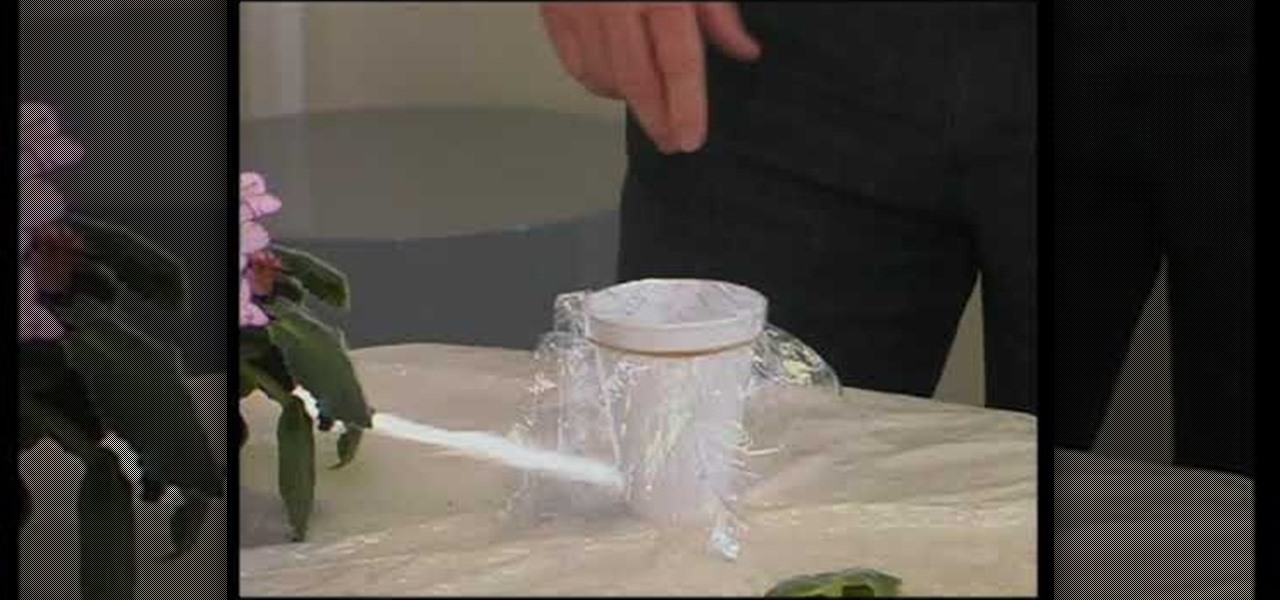
How To: Propagate iceplants and african violets
to transfer ice plants, take a Styrofoam cup with holes in bottom and sides for drainage. fill cup with potting soil. place cuttings of ice plants into pot, about 2-3 cuttings per cup. keep moist. for African violets, snap off an entire leaf including the stem. fill a Styrofoam cup with water. cover with saran wrap with a rubber band around the edge to keep it tight. cover completely with aluminum foil to keep inside of cup dark. place hole in center of plastic/aluminum foil with a pencil. pl...
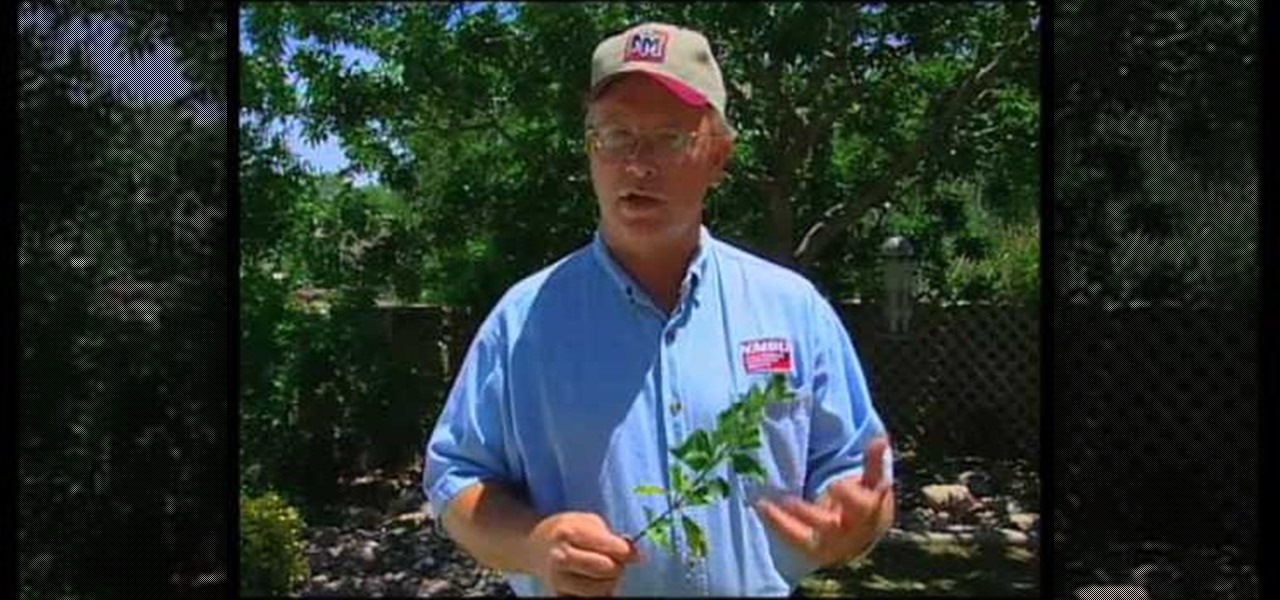
How To: Identify problems with a ground covering juniper
This video illustrate us how to identify problems with ground covering junipers .Here are the following steps .step 1: First of all look through the whole plant and see whether there is any browning or fall of leaf, if so then this may be due to water logging as these plants are good for soil with well seepage and lots of sun.Step 2: Look whether the leafs are free of all the bacterial and fungal infection.Step 3: Look whether there are any spider mites present, if so remove them.Step 4: Look...
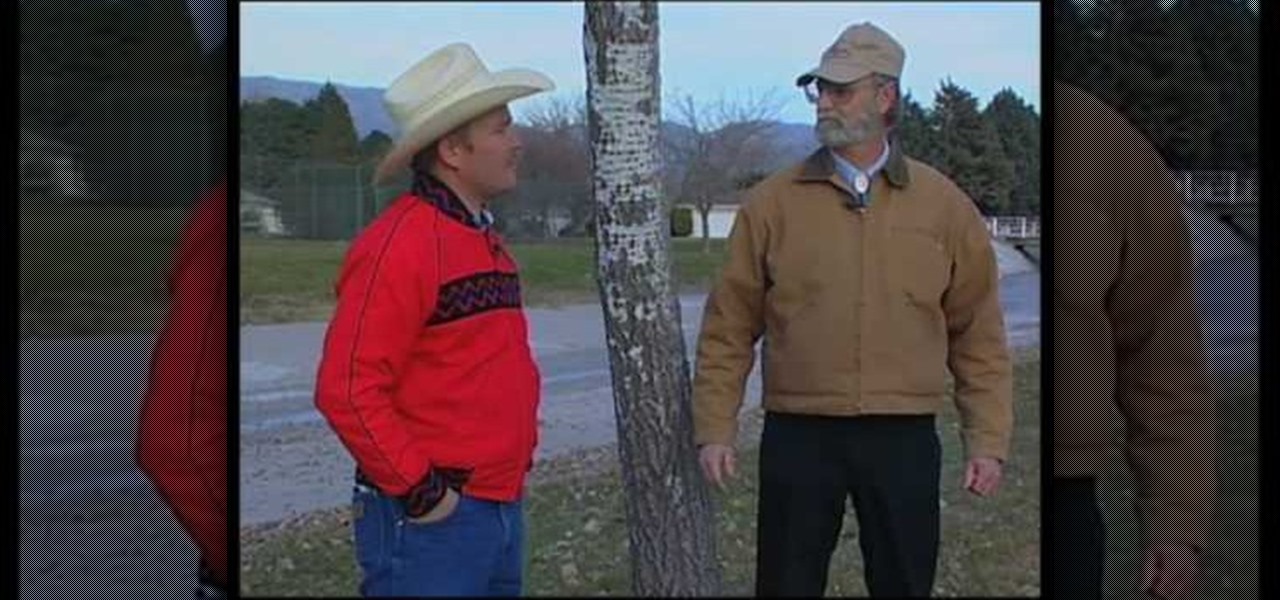
How To: Identify fall web worms in trees
Curtis Smith (Extension Horticulturist) and Rick Daniell (Bernalillo Co. Horticulture Agent) examine the bark of a poplar tree. The young bark is smooth and will furrow as it grows older. There are straight horizontal lines on the bark that look like sap-sucker damage but in this case, the markings on the poplar is the normal bark development of the poplar. They also look at and discuss Fall Web Worm cocoons which look like bird nests on a tree. Web worms do not do as much damage to the tree ...
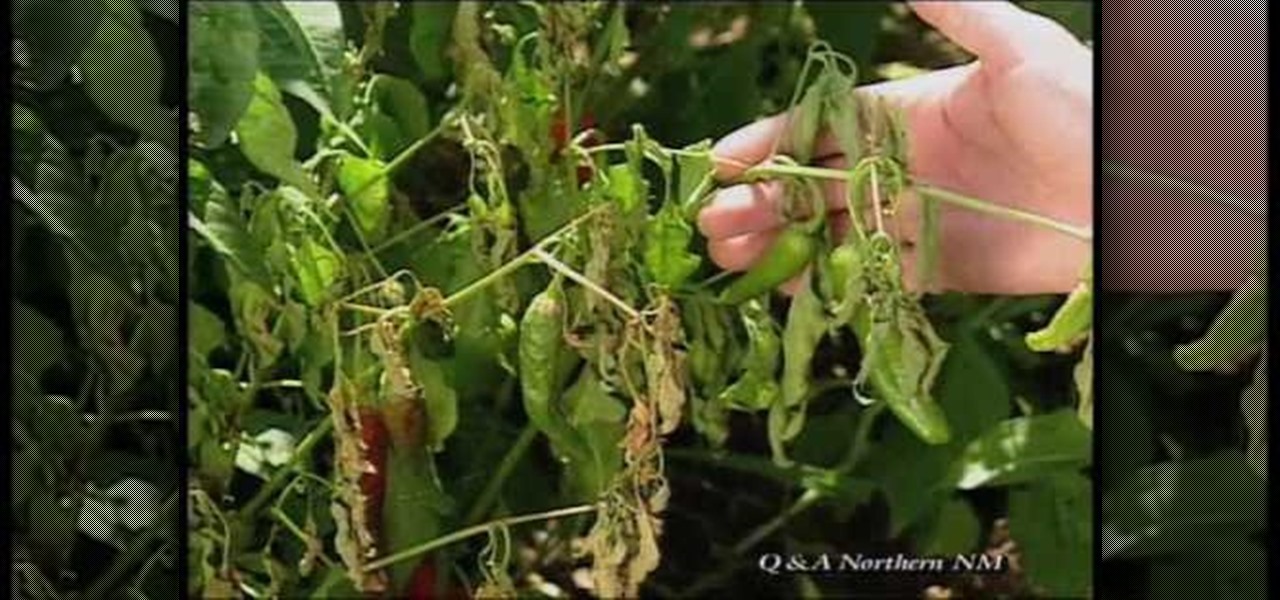
How To: Identify problems squash, melons, & chile plants
This video answers some questions on how to identify some of the problems that occur in vegetable gardens: for example, if there are missing leaves on your tomato plant, then it is an indication that they are being eaten by something. In some cases, this pest is the Tomato Hornworm. The Mosaic Virus and Curly Top and Tomato Spotted Wilt also attacks tomato plants.

How To: Identify problems with vegetable plants
Curtis Smith, Extension Horticulturist with Southwest Yard and Garden, and Rick Daniell, Bernalillo County Horticultural Agent, discuss how to identify problems with vegetable plants in your garden. Gray or white spots on a squash leaf are natural if they do not rub off. Blossom end rot can afflict tomatoes, squash, chilies and melons. Blossom end rot indicates a calcium deficiency during times of vigorous growing during uneven watering. Fertilize when the plants are young. Sun scald can affl...
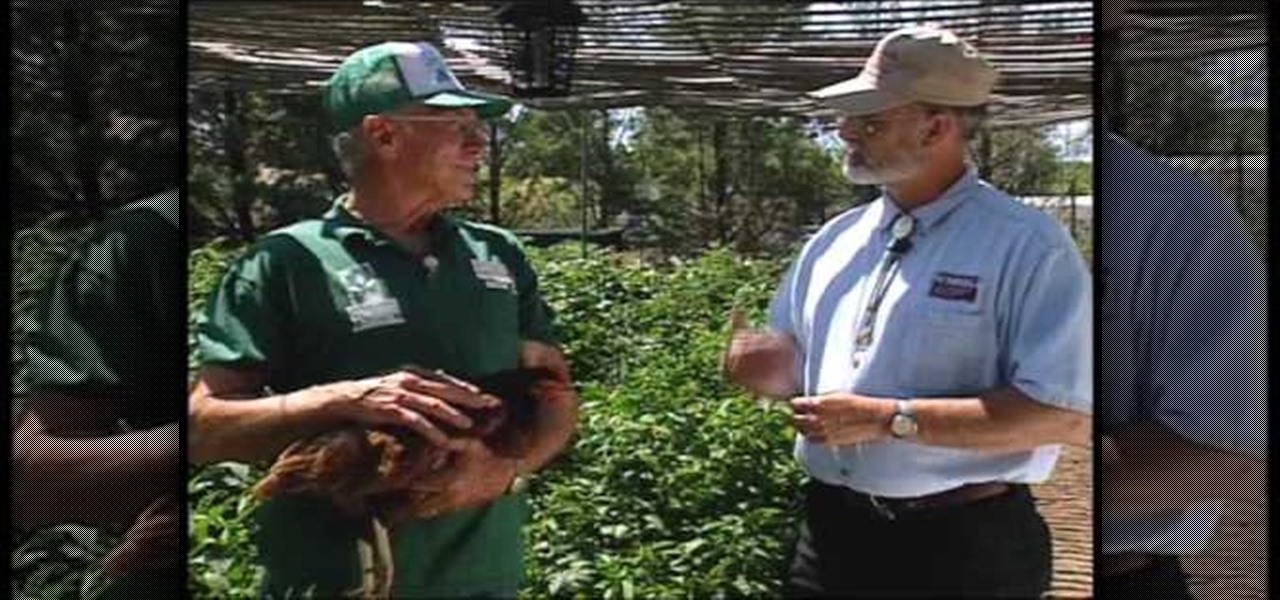
How To: Use chickens to control garden pests in orgainic farms
Curtis Smith provides information on how to use chickens to control garden pests. Using chickens keeps the use of pesticides to a minimum and keeps plants healthier. In the organic garden, chickens are used because they'll eat any insect as well. The process is known as Integrated Pest Management, Curtis explains that its basically knowing your pest. It also reduces the amount of feed that has to be purchased for the chickens because they're eating the insects in the garden. It also controls ...
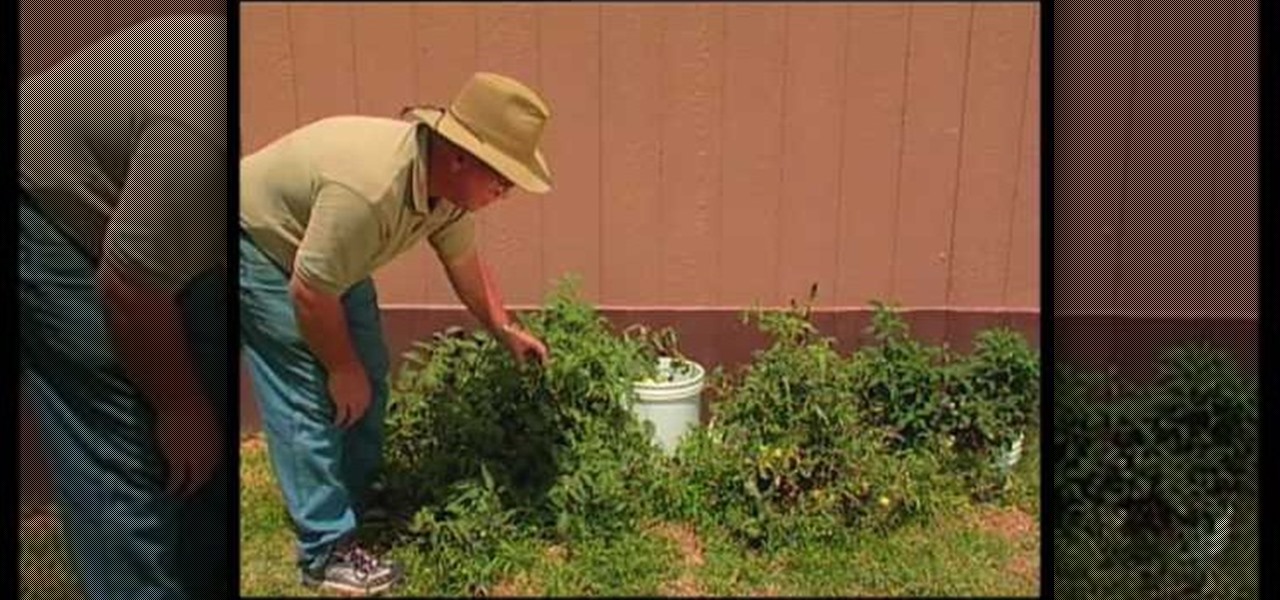
How To: Build a home garden in a small space
This video explains how to build a home garden in a small space. The video begins with the first small garden example being show, this garden contains corn, tomatoes and summer squash. It is explained that it is very important to shake and loosen the pollen buds on many of the plants to ensure proper pollination. The second small garden shown consisted of tomatoes and various pepper breads. The need to loosen pollen and allow the wind to help the plants get on pollen on the female buds. It is...

How To: Make a cheap compost roller
This video explains how to make an inexpensive compost roller. The video begins with a composed pile shown covered with a tarp to keep rain away from. The materials needed for this project consists of 3" barrel nuts(2), 3" hinges(3) and machine screws(3pk) from a local Wall-Mart. The tools needed for this project consist of an electric drill with drill bit, screw driver, wrench, jig saw or key saw and a heavy duty utility knife. The compost roller made was just a simple plastic drum with a hi...
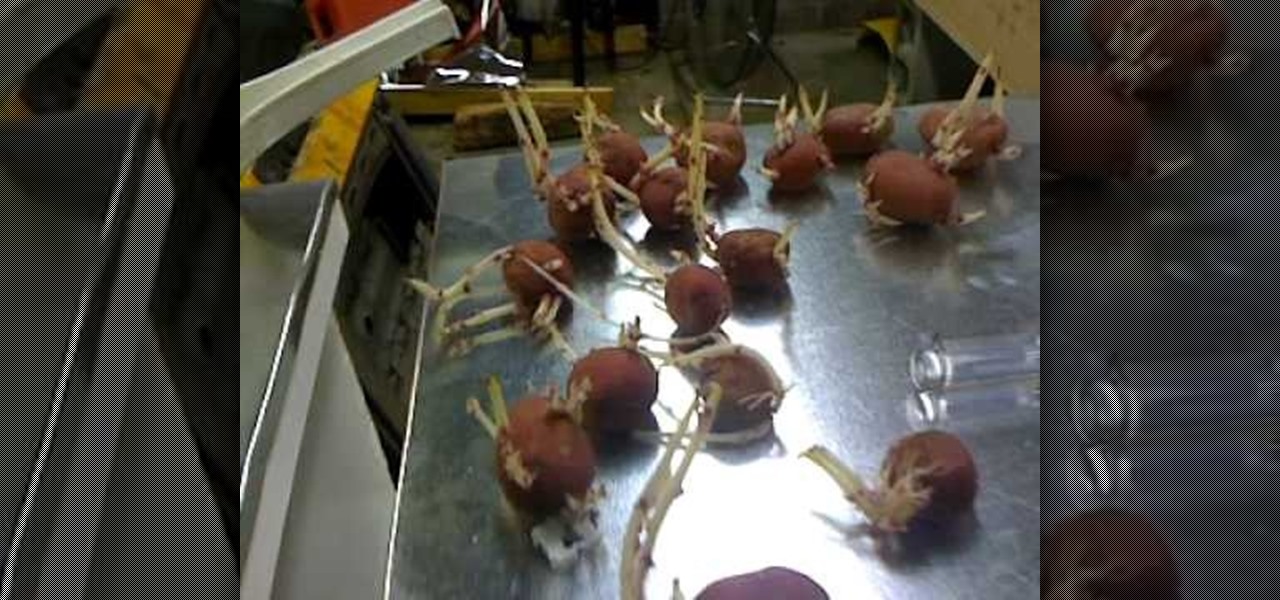
How To: Grow potatoes in a 5 gallon bucket
In this video you will learn how to get your potato plant growing using a 5 gallon bucket. Start by taking your 5 gallon bucket and drilling a series of small holes at the bottom for draining. Next line the bottom of your bucket with about 2 inches of rocks to help with drainage and top with a layer of weed block and a couple inches of soil. Now your bucket is ready to add a budded potato. To make your potatoes bud out simply leave them in a bag and place them in the dark for about a month un...
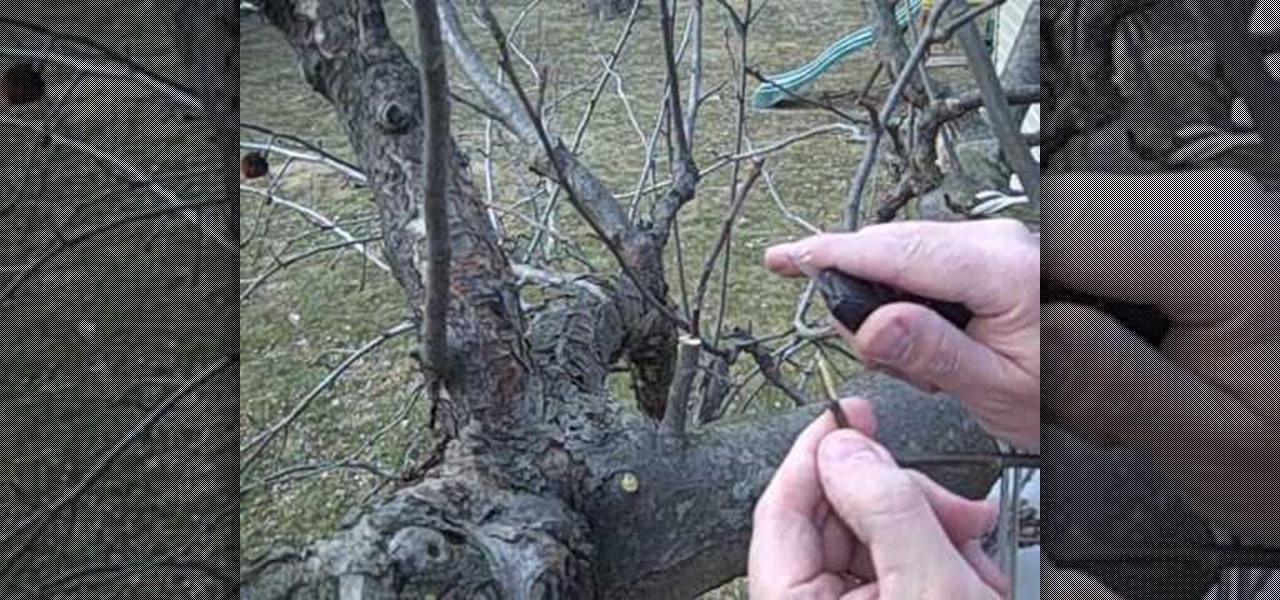
How To: Graft an apple tree
Cityslipper shows you how he uses the cleft grafting method to make a less appealing green apple tree produce better tasting red apples. 10-12 inches long scion wood is collected from the good apple tree while it is dormant. Care is taken not to let the twigs dry out. Selected scions should not have spurs rather they should have leaf buds that lay flat against the twig. A good host twig on a healthy-looking branch should be selected. A clean cut should be made with the fine teeth of a grafing...
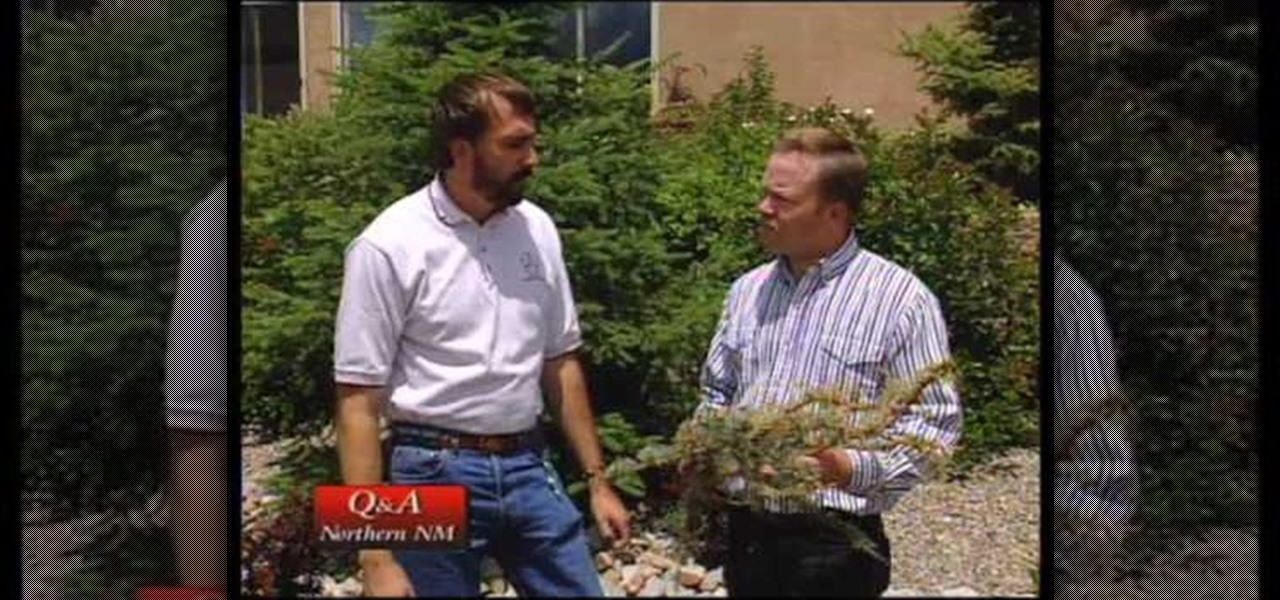
How To: Identify problems with the spruce tree
The first thing you have to understand is that the damage that comes to the spruce is mainly from the weather, moths, and caterpillars. The caterpillars and moths dry out the tree slowly, sometimes it is not noticed until the tree is on the verge of dying. One way to make sure this doesn't happen is to look under the spruce branches and the underside of the plant. You will be able to notice when it is getting withered by caterpillar accumulation. If there is a lot of caterpillars of the grayi...
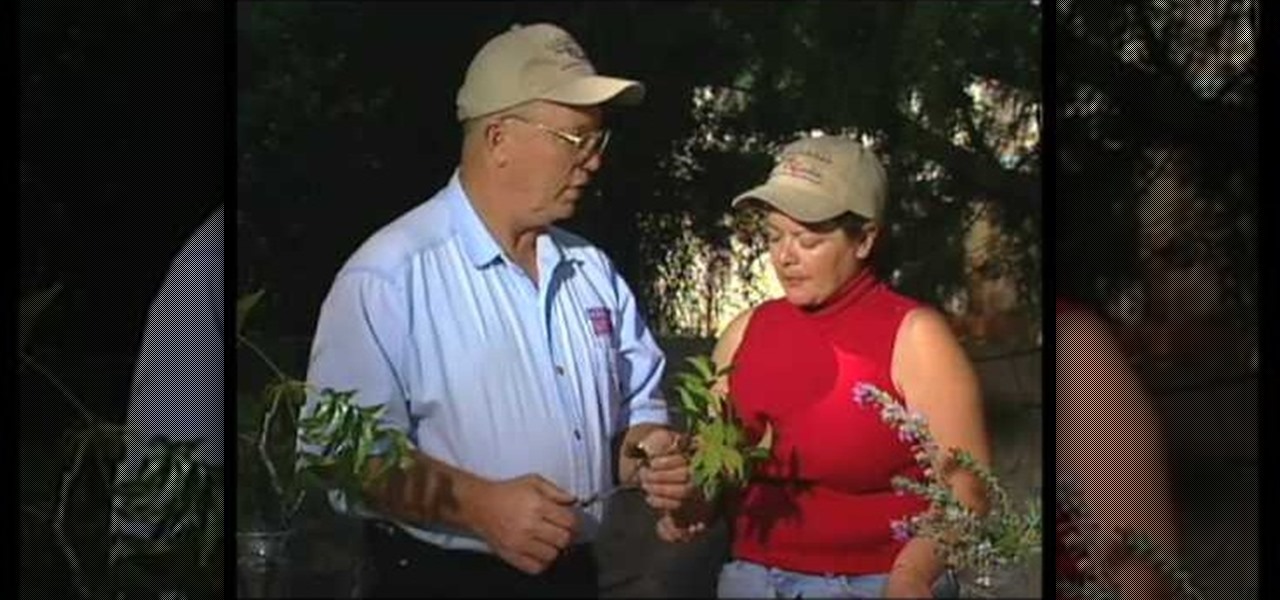
How To: Identify pecan problems
Master Gardener Valois Pearce advises how to identify problems with pecans. 1. Look for webworms. One control is to cut the branch off if you can. You can break the web with a strong blast of water. 2. Shiny leaves indicate there may be a problem with Aphids. 3. Check for Pecan-nut Casebearer. Should you decide to use insecticide for any of these problems, please check with your local county extension office to confirm spray dates. Even with these precautions trees normally do not give a hund...
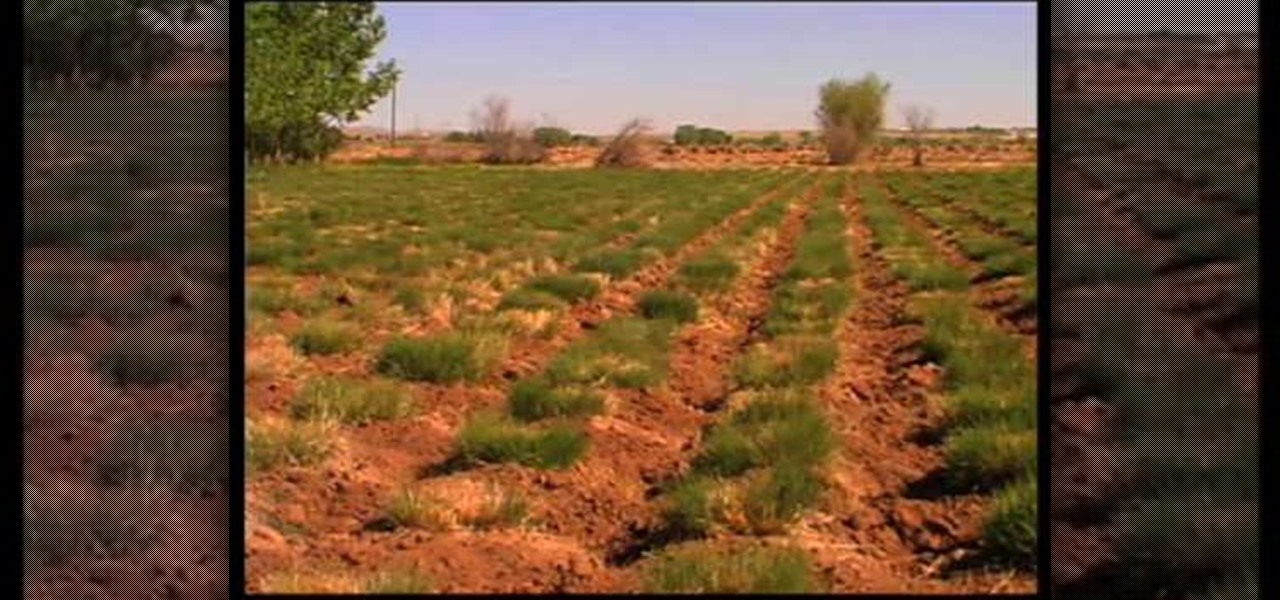
How To: Pick out an ornamental grass for landscape
This video shows us several types of ornamental grass that can be used in landscape projects. Although none of these grasses are appropriate for use in lawns, they are great options for those who are concerned about water conservation. Ricegrass is a bunch grass with long stems and silver heads. It is a cool-season grass and will go dormant in hot weather. Little Bluestem grows quickly in the Spring and is known for its variety of colors including blue, green, and yellow. Giant Sacaton is a g...

How To: Make compost from homehold kitchen scraps
This video shows you how to make compost from organic debris in the garden and leftover food.To make compost, you must add organic debris or scraps of food to such as pine needles, leaves or fruits to your compost bin. You should use horse or cow manure to speed up the process. You can also use nitrogen fertilizers as long as they do not contain herbicides. Then add water to the whole mixture.It is recommended that the compost bin should be about 3 feet high and 3 feet wide in order to insula...
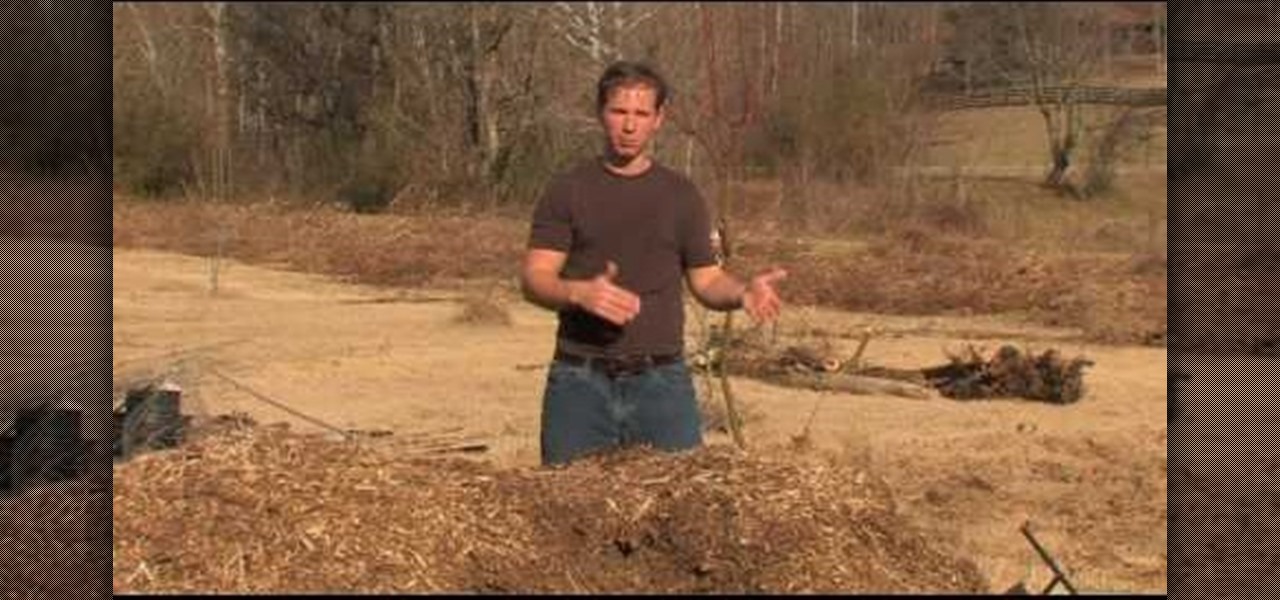
How To: Protect your plants from frost
An associate from Garden Years discusses the danger frost poses to small, outdoor plants. Since you don't have a lot of control over the weather, there are a few tips you can follow to try an avoid any unwanted damage to existing plants. The host examines a peach tree to identify when a plant is blooming and thus very delicate. If a plant is fully blooming, then any temperature below freezing (32 f) can damage the blossoms. Aside from putting cloth over the plant, mulch is also very helpful i...
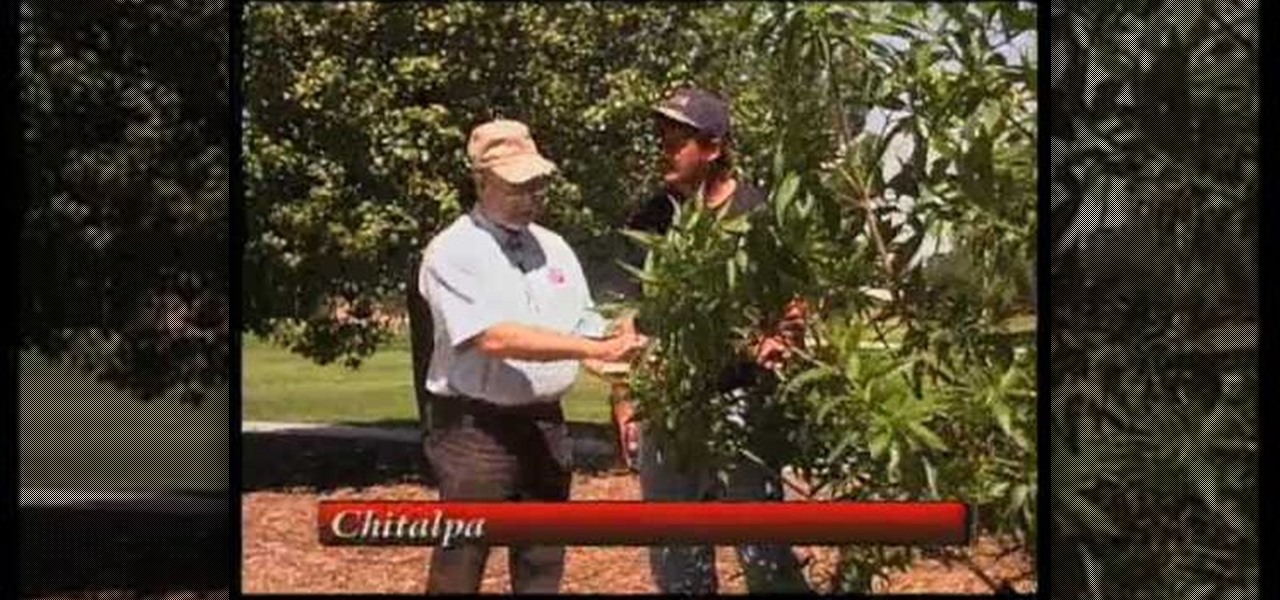
How To: Choose the right tree for New Mexico gardens
Curtis Smith, Extension Horticulturist, and Jeff Hart of the Albuquerque Parks Department discuss the types of trees that grow in Albuquerque.

How To: Prune a Juniper bonsai
First of all you have to need a bonsai and scissors. In the type of the tree shown in the tutorial which is a fifteen year old, once you have got the branch structure established then you can prune the leaves over it. Start from the bottom branch chop of the leaves that are out of symmetry with your scissors. Cut from the outside to the inside. Now move towards the upper branches. Chop off extra new branches which are coming out from the main branches. Reduce the leaves in a fine length all a...
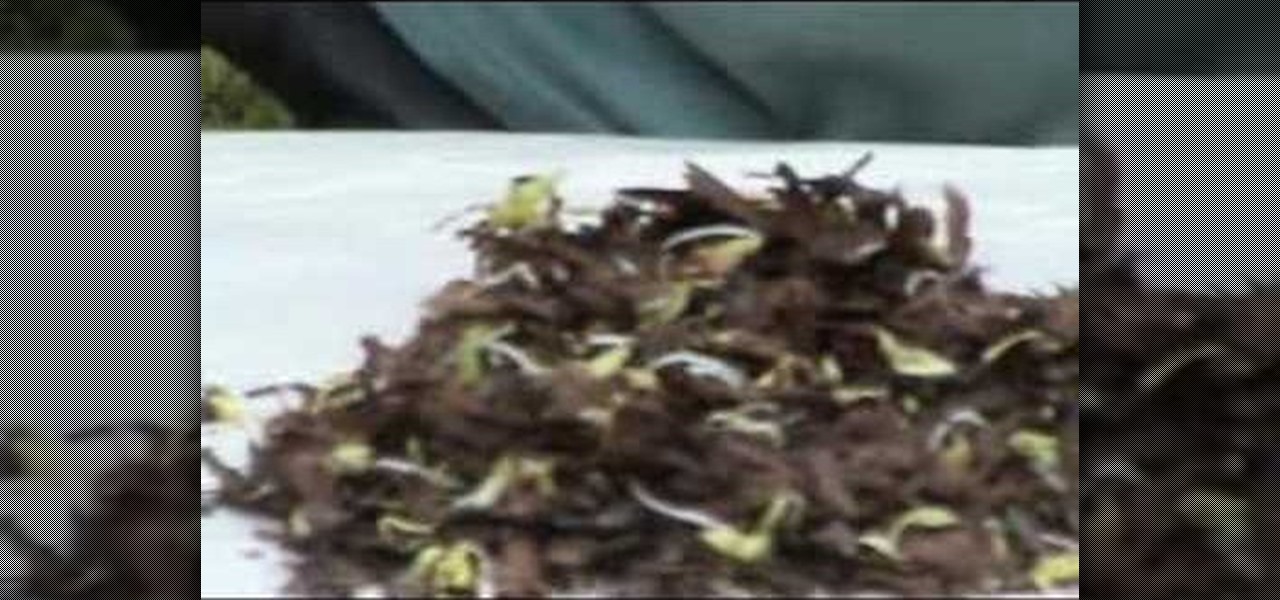
How To: Germinate Japanese maple seeds
Ken Alston shows how to germinate Japanese maple tree seeds. The most important thing is to always buy fresh seeds. Seeds that are bought on eBay or other unreliable sellers are dry and lifeless and the chances of germination are not very good. The video shows the huge difference between the dry seeds and the fresh seeds. On the fresh seeds you can see that the roots are already out and in some cases the leaves are out, so from this point the rest is easy. Have little seed pots ready, make sm...
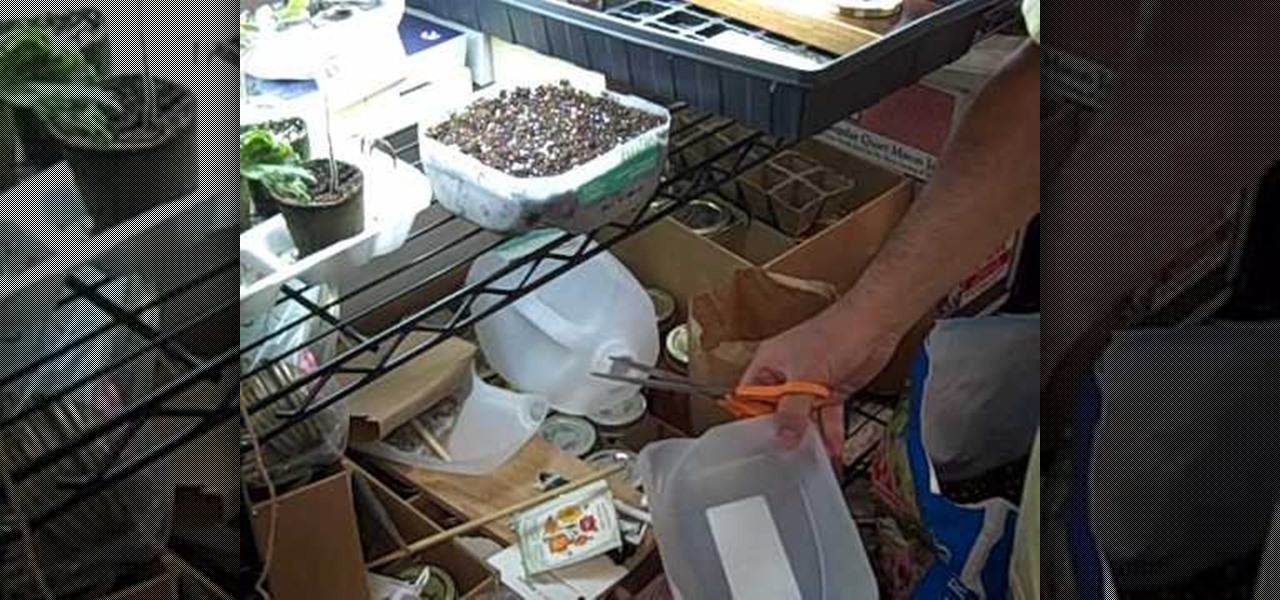
How To: Make cheap seed planters for a small kitchen garden
In this how-to video, you will learn how to make a simple cost-saving planter for a small kitchen garden. First you will need a plastic milk jug. Cut at the opening of the jug and split it in half vertically. Next, place soil inside the half of the jug. Water this part well, but do not have a standing puddle underneath the jug. Use a chopstick to poke holes into the soil. This will allow you to plant about 35 seeds in the plastic planter. Viewing this video will show you the easiest way to ma...
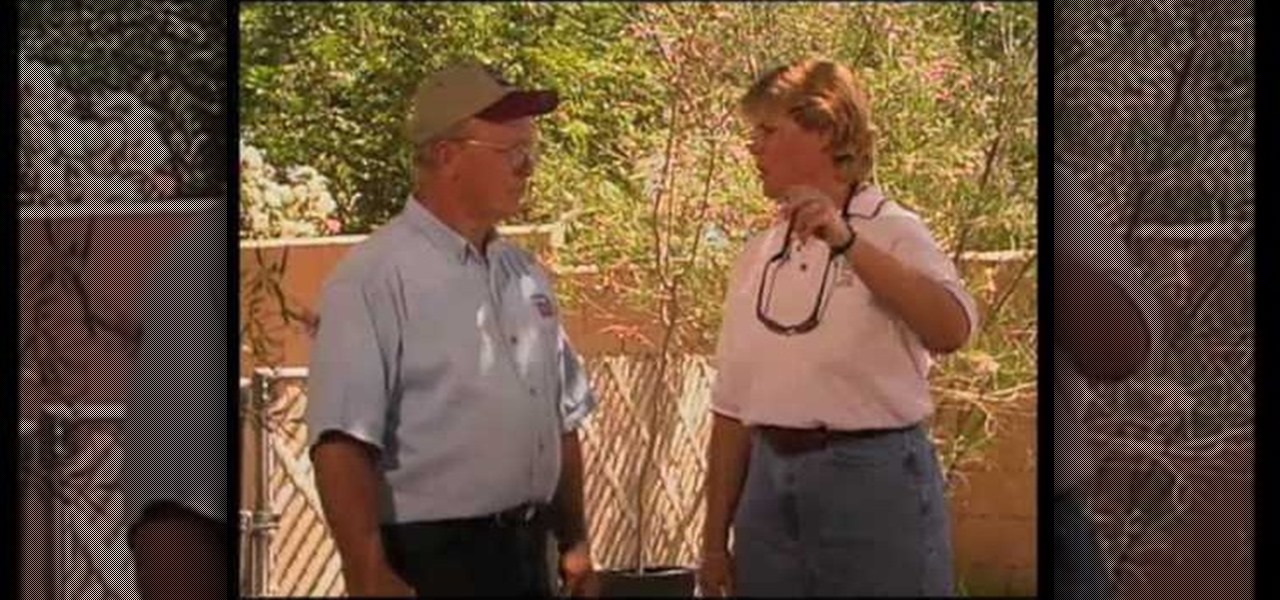
How To: Identify common shrub & tree diseases
John White (Doña Ana County Extension Agent) talks to Natalie Goldberg (Extension Plant Pathologist) about Powdery Mildew that affects many plants. They look at a Japonica that is heavily infested. Powdery Mildew is enhanced by shaded condition despite the dry climate. It starts with a spot spore infection that will easily spread by the wind or by rubbing. Control methods are difficult and involves a lot of routine applications of chemicals (ornamental fungicide) to keep it in check once the ...

How To: Plant tulip or daffodil bulbs in the fall
In this video Bob describes how to plant bulbs. Bulbs are among the easiest flowers to grow. They don't like "wet feet" so always plant your bulbs where it's sunny. In the Spring the trees don't have their leaves yet so you will have a lot of different places to plant your bulbs. Your bulbs, depending on the size will go in to the soil at different depths. You can plant them singly or plant a bunch of them at once in one hole, just space them and cover them well. Make sure to mix compost or p...

How To: Identify fruit tree problems
This video describes problems with fruit trees and how to deal with them. One problem is Chlorosis, identified by yellowing leaves with green veins between the sections of the leaf. This is caused by a micronutrient deficiency (usually iron) that results when the tree roots are unable to absorb all the nutrients from the soil. This problem can be temporarily treated with a foliar spray of iron. Another problem is pruning wounds with decay that results when trees are not pruned correctly. They...

How To: Identify probles with weevils and leaf cutter bees
In this video from nmsuaces we learn how to identify problems with weevils and leaf cutter bees. Weevils attack all kinds of plants in a J shape on leaves. To tell a difference between a weevil and leaf cutter bee is the bee will make a perfect round cut, whereas a weevil makes more of a J shape. If it starts doing serious damage you may need to control them. The weevil works at night. In this video she also discusses vines. A potato vine needs to be tied up as it grows. It's good for around ...
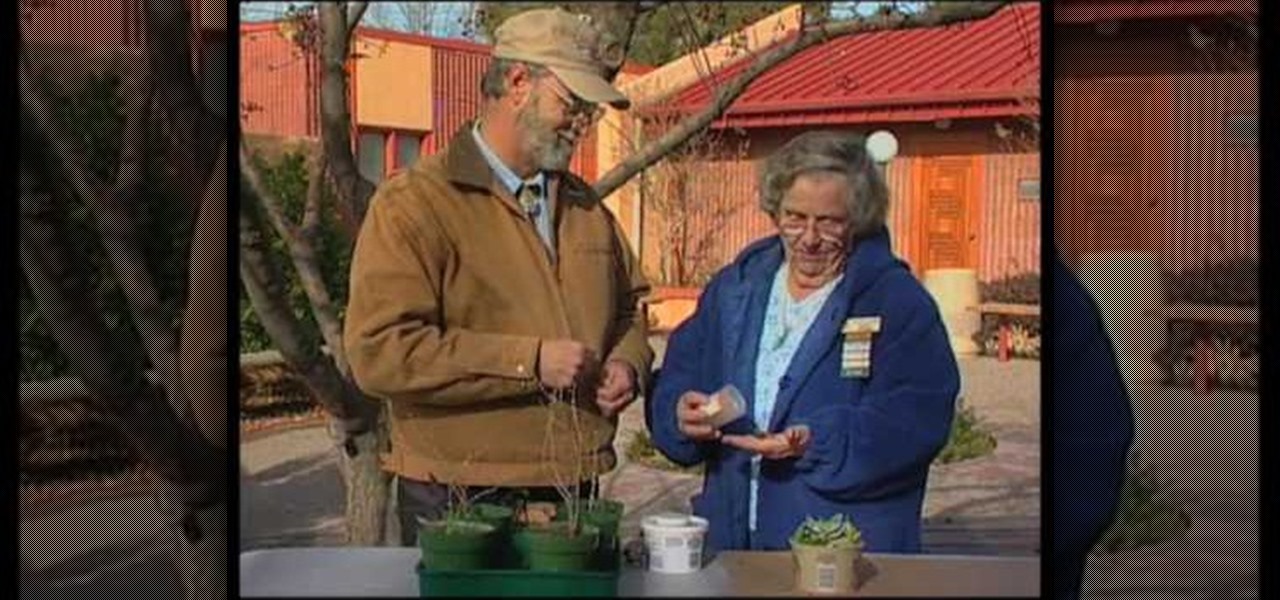
How To: Care for and transplant small house plants
This is a great way to learn how to upgrade your small house plants into bigger ones. Start over plants once a year. Put rocks on the bottom for drainage. Bugs help your plants to grow. Do not use Pesticides on your house plants. Water weekly. Compost bins make great soil. Sweet potatoes that have roots growing off of them put in a glass of water and wait for them to grow roots. Give you plants at least six hours of sunlight daily. They also like when you talk to them and touch them you can c...
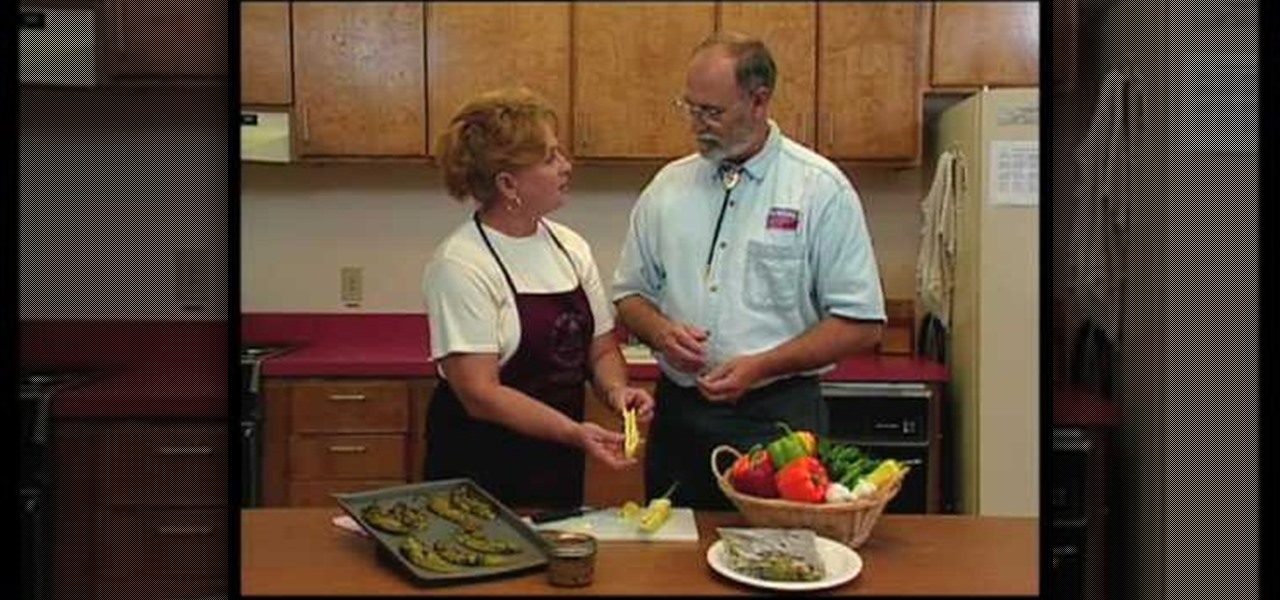
How To: Make chile pods mild or hot
In this Home & Garden video tutorial you will learn how to make chilly pods mild or hot. Curtis Smith, extension horticulturist, presents this video along with Patricia Aaron. The heat of the chilly is in the skin and the veins. When you cut open a chilly, you will see all the veins are near the shoulder or the chilly. So, the shoulder part of the chilly is hotter than the tip. So, if you want to make the chilly milder, then cut off the top part. Seeds do not add to the heat of the chilly. If...



